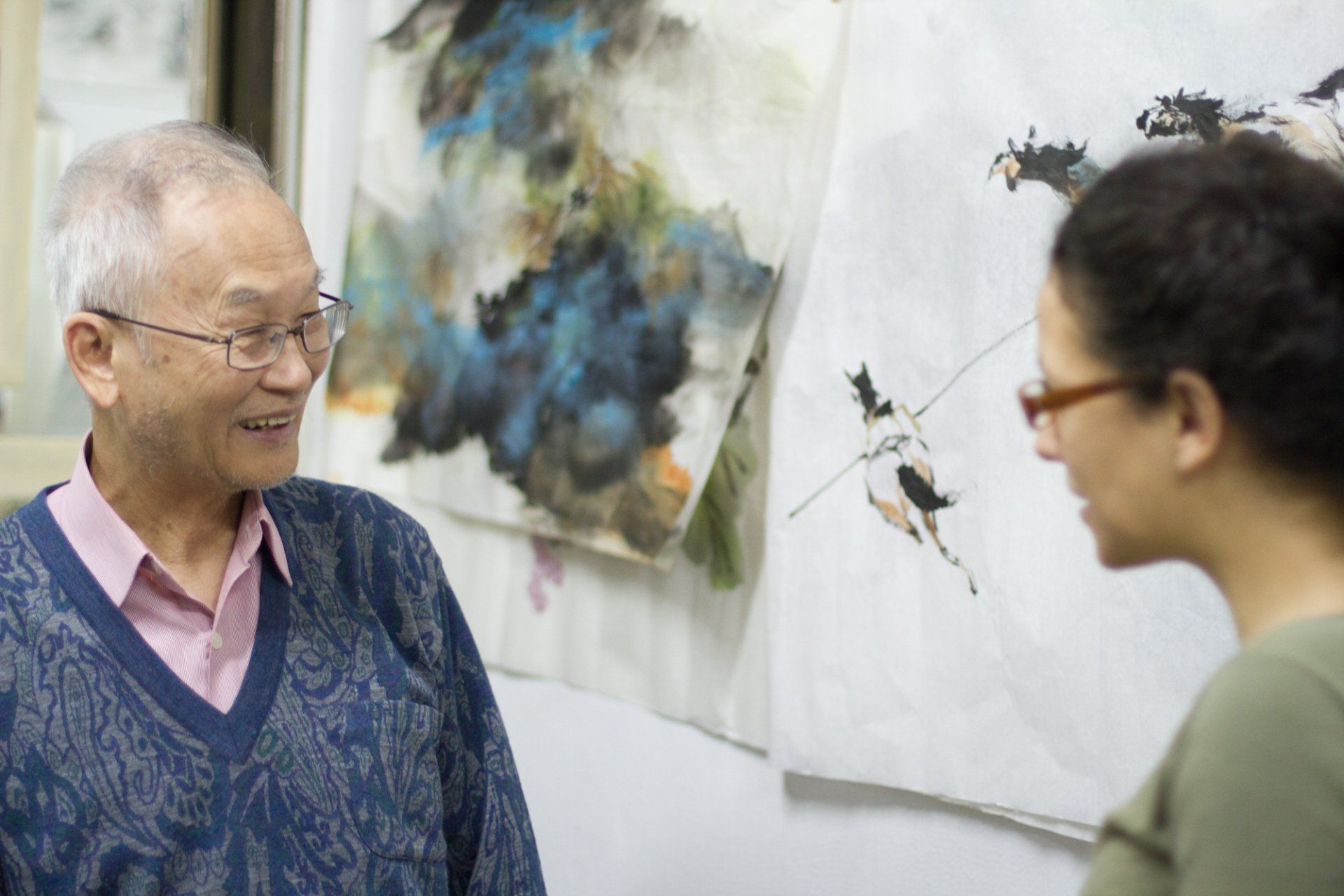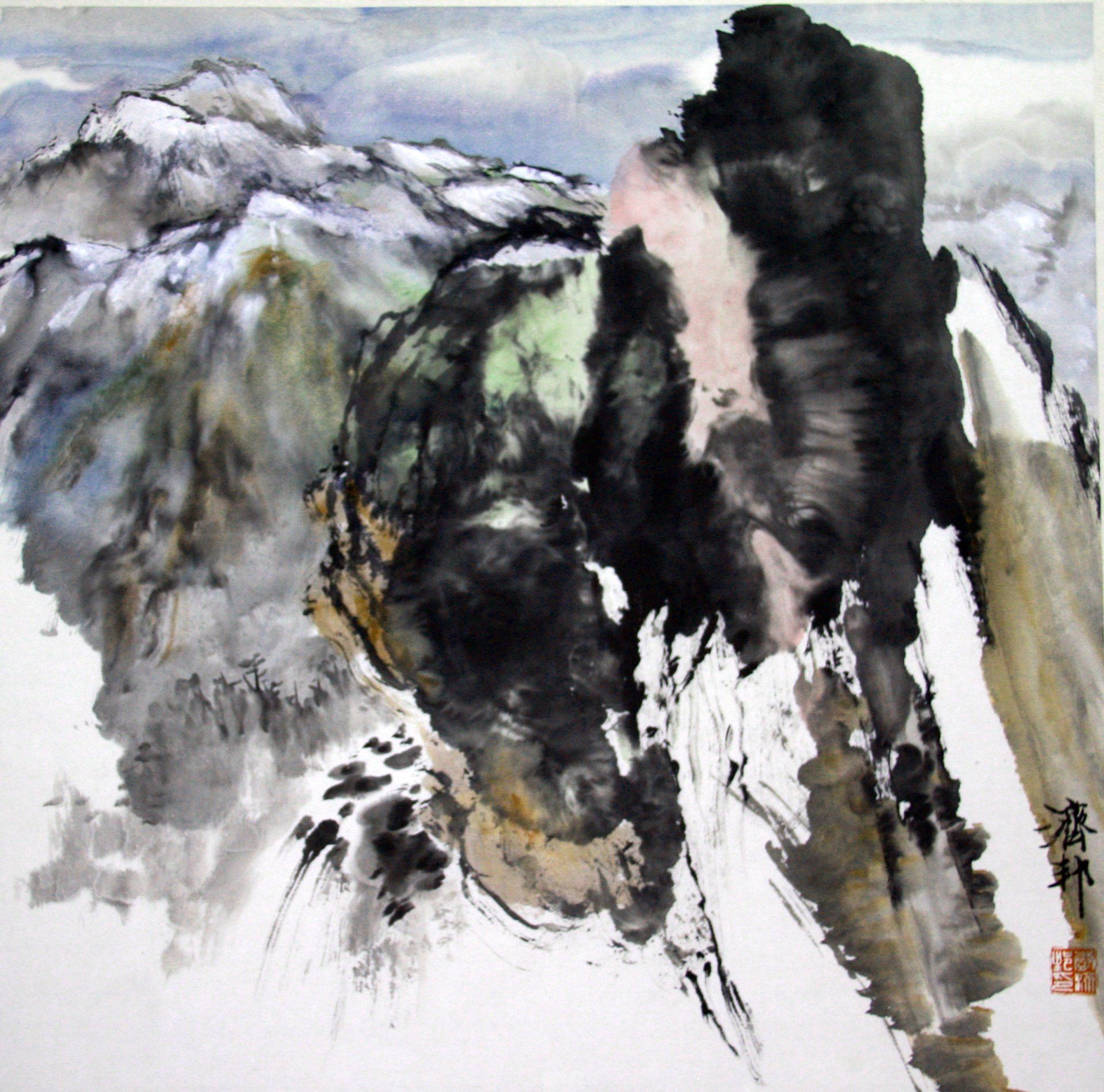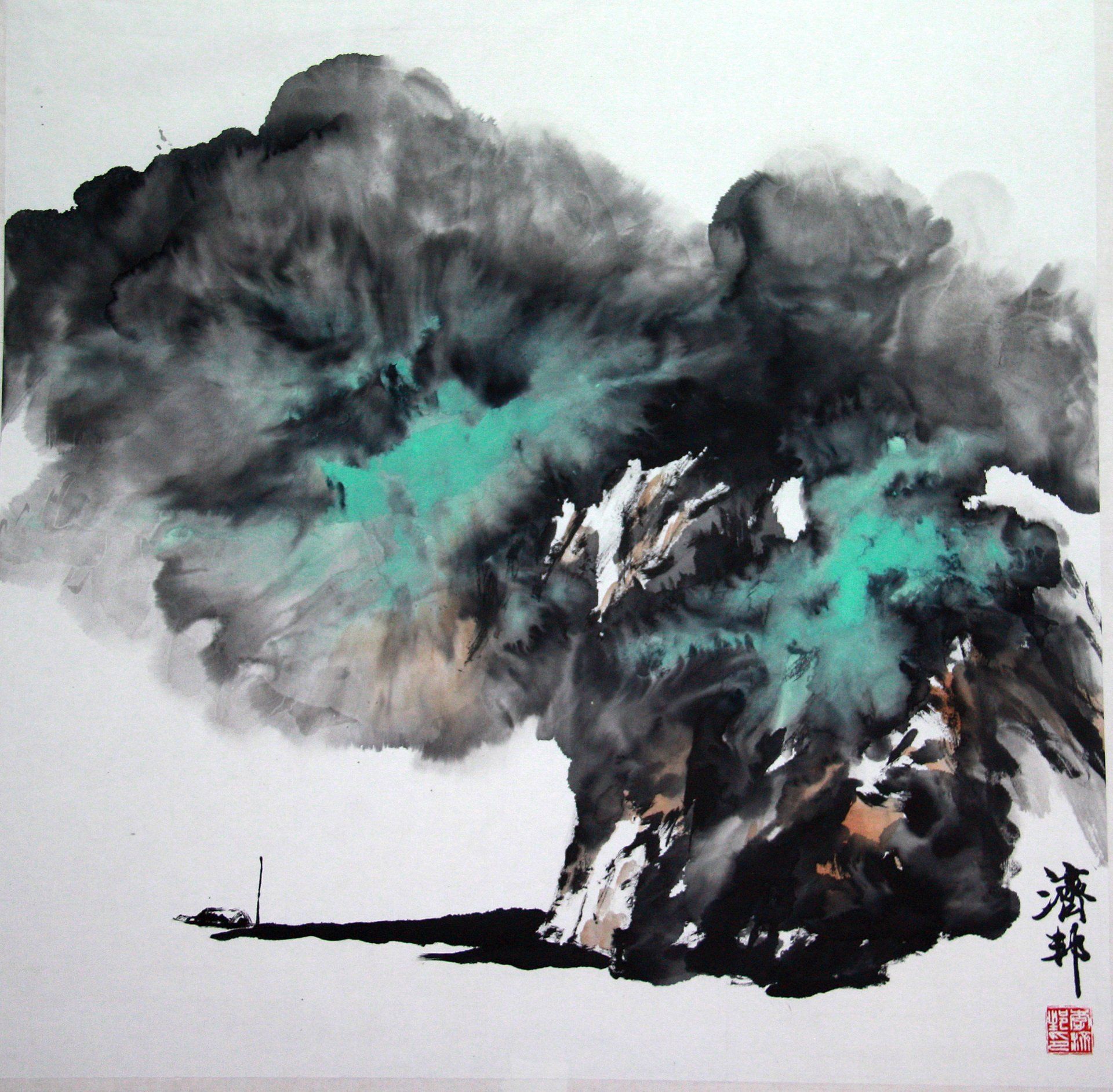Li Chi Pang 李 濟 邦 The transformation of painting
“Painting shows (hidden) decisions of thought; it shows its singularity in operation” (JULLIEN; 2008, p. 303)
Just as Leonardo Da Vinci (Florence, 1452-1519) wrote the famous “Treatise on Painting” (1498 approx.), leaving a valuable document to understand the beginnings of the perspective method, also in the Chinese tradition we can trace some writings that are of singular importance to know the rules that still persist today in that pictorial tradition. One of the oldest is “The Record of the Classification of Ancient Painters” written by Xie He (5th century), considered one of the first historians and critics of Asian art. In the preface the “Six Fundamental Principles or Canons of Painting” are explained, precepts intimately intertwined in Chinese culture precisely because of their closeness to Taoist philosophy. According to the translation made by Yasunari Kitaura (and with some annotations of his own) these six original principles could be interpreted as follows: 1) Movement or living presence of the spirit of the object. At this point the author refers to that central concept in oriental arts: the primordial breath that gives vitality to each brushstroke, transforming the image into visual plenitude. 2) Firmness and linear precision in the way of using the brush. Here the importance of correctly structuring the object/s, the skeleton that determines them, is reflected. This precise handling must lead to the creation of the armature of the motif, that is, reproducing the contour, the recognizable morphology of what is painted. 3) Fidelity in the capture of forms. It implies correspondence with the object, veracity in the capture of reality and is perhaps the principle most closely linked to a formalist rigor and includes the use of the line for the profiling of that reality. 4) According to each thing its color. Here lies the need to provide the work with truthful colors, an adaptation to the type or application of color that includes the superimposed layers that vary its value and chroma. 5) Compose the elements by placing each one in its proper place. It expresses how the compositional elements, planes and distances of space should be arranged in order to create depth. 6) Copying classical models so that tradition is perpetuated. This last canon mentions a key aspect: the importance of learning from ancient masters to expand our knowledge and at the same time make their art last through this system. The copying of nature must be taken into account, since this is the theme par excellence of Taoist painting, while the copying of classical paintings should not be understood as a mimetic transcription, but as an exercise in personalized interpretation of the same. At this point, it must be considered that the Chinese tradition is far from the “demand for similarity” (understood as similarity of form) that prevailed for several centuries in the European pictorial tradition.
Each of these aesthetic prescriptions must be read within the framework of a much broader visual system and put in relation to certain cultural, political and social conditions that gave rise to it, so that its in-depth approach would require successive pages. In relation to this last canon, I will refer to the work of Master Li Chi Pang, who I consider an essential artist of the oriental pictorial tradition in Spain. Li Chi Pang was born in the province of Kwang Tung (China) in 1940 and at the age of fourteen he began his painting classes with Chen Dan-Cheng and ChianYu-Chung. Around 1965 he obtained the title of “Bachelor of Literature” from the University of “500 Cho” in Taiwan. For him (as for Henri Michaux and so many other artists) there is an exquisite dependence between painting and writing and they complement each other. It should be noted that his most prolific and visible activity revolves around the production of paintings where nature is the recurring theme. Since 1966, he has also been teaching and has held exhibitions and demonstration workshops in different cities in Spain and China. He defines himself as a painter who has the freedom to move from one motif to another. His paintings feature roosters, high mountains, monks walking towards these high mountains, horses galloping intensely and flowers that seem to be floating on a smooth surface: each and every one of them always done with exceptional mastery. And truly, as Françoise Jullien states, “What [this] painter expresses through form is the phenomenon of the transformation of life – there would ultimately be no other possible object for painting” (JULLIEN; 2008, p.336). In each class I witness this transformation of life, watching the master Li Chi Pang paint in his small studio at the back of a grocery store in the center of Madrid. I have the privilege of seeing how the immanent nature of a bamboo transcends the paper of vegetal fibers, witnessing the spontaneity of its strokes made without any effort: each brushstroke is internalized like each breath. “A good painter does not experience doubts or hesitations during the execution and does not have the need to make preparatory sketches or outlines, since these would “chain him beforehand”” (JULLIEN; 2008, p. 332) This exercise of open-door painting does nothing more than affirm the idea of painting as transformation, an alchemy in action, the transmission of vital breath. The meaning of this action so common in oriental painters has not lost validity, but is updated in each staging. In this regard, Li Chi Pang considers that there would be no difference between traditional Chinese painting and contemporary painting, but rather it would be something like the parts of a whole. The master affirms that “tradition is like a root that develops towards the light and the flower would be contemporary.” In this way, the transition between the classical and the contemporary would not be abrupt, as if it were part of watertight compartments, but rather a continuity that flows, transforms and enriches itself over time. It is a privilege to know the oriental pictorial tradition through Li Chi Pang and thus to make his art endure through this system.






